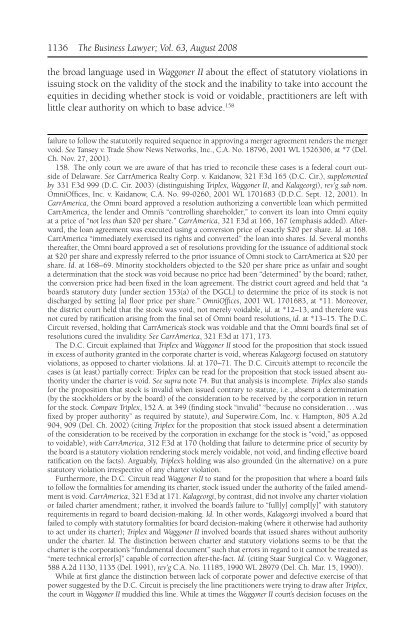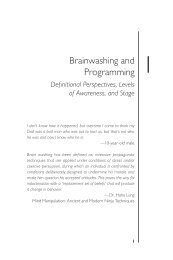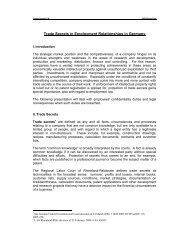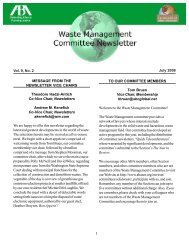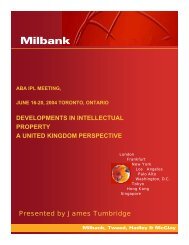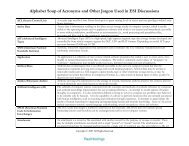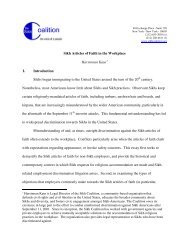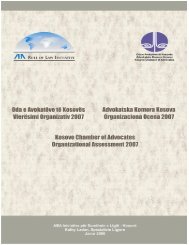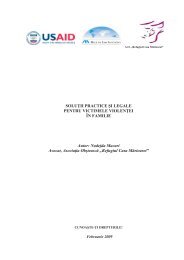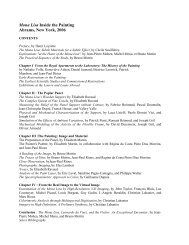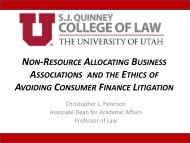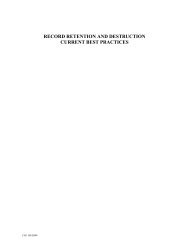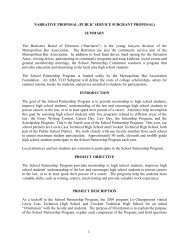Curing Defects in Stock Issuances - American Bar Association
Curing Defects in Stock Issuances - American Bar Association
Curing Defects in Stock Issuances - American Bar Association
Create successful ePaper yourself
Turn your PDF publications into a flip-book with our unique Google optimized e-Paper software.
1136 The Bus<strong>in</strong>ess Lawyer; Vol. 63, August 2008<br />
the broad language used <strong>in</strong> Waggoner II about the effect of statutory violations <strong>in</strong><br />
issu<strong>in</strong>g stock on the validity of the stock and the <strong>in</strong>ability to take <strong>in</strong>to account the<br />
equities <strong>in</strong> decid<strong>in</strong>g whether stock is void or voidable, practitioners are left with<br />
little clear authority on which to base advice. 158<br />
failure to follow the statutorily required sequence <strong>in</strong> approv<strong>in</strong>g a merger agreement renders the merger<br />
void. See Tansey v. Trade Show News Networks, Inc., C.A. No. 18796, 2001 WL 1526306, at *7 (Del.<br />
Ch. Nov. 27, 2001).<br />
158. The only court we are aware of that has tried to reconcile these cases is a federal court outside<br />
of Delaware. See CarrAmerica Realty Corp. v. Kaidanow, 321 F.3d 165 (D.C. Cir.), supplemented<br />
by 331 F.3d 999 (D.C. Cir. 2003) (dist<strong>in</strong>guish<strong>in</strong>g Triplex, Waggoner II, and Kalageorgi), rev’g sub nom.<br />
OmniOffi ces, Inc. v. Kaidanow, C.A. No. 99-0260, 2001 WL 1701683 (D.D.C. Sept. 12, 2001). In<br />
Carr America, the Omni board approved a resolution authoriz<strong>in</strong>g a convertible loan which permitted<br />
CarrAmerica, the lender and Omni’s “controll<strong>in</strong>g shareholder,” to convert its loan <strong>in</strong>to Omni equity<br />
at a price of “not less than $20 per share.” CarrAmerica, 321 F.3d at 166, 167 (emphasis added). Afterward,<br />
the loan agreement was executed us<strong>in</strong>g a conversion price of exactly $20 per share. Id. at 168.<br />
CarrAmerica “immediately exercised its rights and converted” the loan <strong>in</strong>to shares. Id. Several months<br />
thereafter, the Omni board approved a set of resolutions provid<strong>in</strong>g for the issuance of additional stock<br />
at $20 per share and expressly referred to the prior issuance of Omni stock to CarrAmerica at $20 per<br />
share. Id. at 168– 69. M<strong>in</strong>ority stockholders objected to the $20 per share price as unfair and sought<br />
a determ<strong>in</strong>ation that the stock was void because no price had been “determ<strong>in</strong>ed” by the board; rather,<br />
the conversion price had been fi xed <strong>in</strong> the loan agreement. The district court agreed and held that “a<br />
board’s statutory duty [under section 153(a) of the DGCL] to determ<strong>in</strong>e the price of its stock is not<br />
discharged by sett<strong>in</strong>g [a] fl oor price per share.” OmniOffi ces, 2001 WL 1701683, at *11. Moreover,<br />
the district court held that the stock was void, not merely voidable, id. at *12–13, and therefore was<br />
not cured by ratifi cation aris<strong>in</strong>g from the fi nal set of Omni board resolutions, id. at *13–15. The D.C.<br />
Circuit reversed, hold<strong>in</strong>g that CarrAmerica’s stock was voidable and that the Omni board’s fi nal set of<br />
resolutions cured the <strong>in</strong>validity. See CarrAmerica, 321 F.3d at 171, 173.<br />
The D.C. Circuit expla<strong>in</strong>ed that Triplex and Waggoner II stood for the proposition that stock issued<br />
<strong>in</strong> excess of authority granted <strong>in</strong> the corporate charter is void, whereas Kalageorgi focused on statutory<br />
violations, as opposed to charter violations. Id. at 170–71. The D.C. Circuit’s attempt to reconcile the<br />
cases is (at least) partially correct: Triplex can be read for the proposition that stock issued absent authority<br />
under the charter is void. See supra note 74. But that analysis is <strong>in</strong>complete. Triplex also stands<br />
for the proposition that stock is <strong>in</strong>valid when issued contrary to statute, i.e., absent a determ<strong>in</strong>ation<br />
(by the stockholders or by the board) of the consideration to be received by the corporation <strong>in</strong> return<br />
for the stock. Compare Triplex, 152 A. at 349 (fi nd<strong>in</strong>g stock “<strong>in</strong>valid” “because no consideration . . . was<br />
fi xed by proper authority” as required by statute), and Superwire.Com, Inc. v. Hampton, 805 A.2d<br />
904, 909 (Del. Ch. 2002) (cit<strong>in</strong>g Triplex for the proposition that stock issued absent a determ<strong>in</strong>ation<br />
of the consideration to be received by the corporation <strong>in</strong> exchange for the stock is “void,” as opposed<br />
to voidable), with CarrAmerica, 312 F.3d at 170 (hold<strong>in</strong>g that failure to determ<strong>in</strong>e price of security by<br />
the board is a statutory violation render<strong>in</strong>g stock merely voidable, not void, and fi nd<strong>in</strong>g effective board<br />
ratifi cation on the facts). Arguably, Triplex’s hold<strong>in</strong>g was also grounded (<strong>in</strong> the alternative) on a pure<br />
statutory violation irrespective of any charter violation.<br />
Furthermore, the D.C. Circuit read Waggoner II to stand for the proposition that where a board fails<br />
to follow the formalities for amend<strong>in</strong>g its charter, stock issued under the authority of the failed amendment<br />
is void. CarrAmerica, 321 F.3d at 171. Kalageorgi, by contrast, did not <strong>in</strong>volve any charter violation<br />
or failed charter amendment; rather, it <strong>in</strong>volved the board’s failure to “full[y] compl[y]” with statutory<br />
requirements <strong>in</strong> regard to board decision-mak<strong>in</strong>g. Id. In other words, Kalageorgi <strong>in</strong>volved a board that<br />
failed to comply with statutory formalities for board decision-mak<strong>in</strong>g (where it otherwise had authority<br />
to act under its charter); Triplex and Waggoner II <strong>in</strong>volved boards that issued shares without authority<br />
under the charter. Id. The dist<strong>in</strong>ction between charter and statutory violations seems to be that the<br />
charter is the corporation’s “fundamental document” such that errors <strong>in</strong> regard to it cannot be treated as<br />
“mere technical error[s]” capable of correction after-the-fact. Id. (cit<strong>in</strong>g Staar Surgical Co. v. Waggoner,<br />
588 A.2d 1130, 1135 (Del. 1991), rev’g C.A. No. 11185, 1990 WL 28979 (Del. Ch. Mar. 15, 1990)).<br />
While at fi rst glance the dist<strong>in</strong>ction between lack of corporate power and defective exercise of that<br />
power suggested by the D.C. Circuit is precisely the l<strong>in</strong>e practitioners were try<strong>in</strong>g to draw after Triplex,<br />
the court <strong>in</strong> Waggoner II muddied this l<strong>in</strong>e. While at times the Waggoner II court’s decision focuses on the


